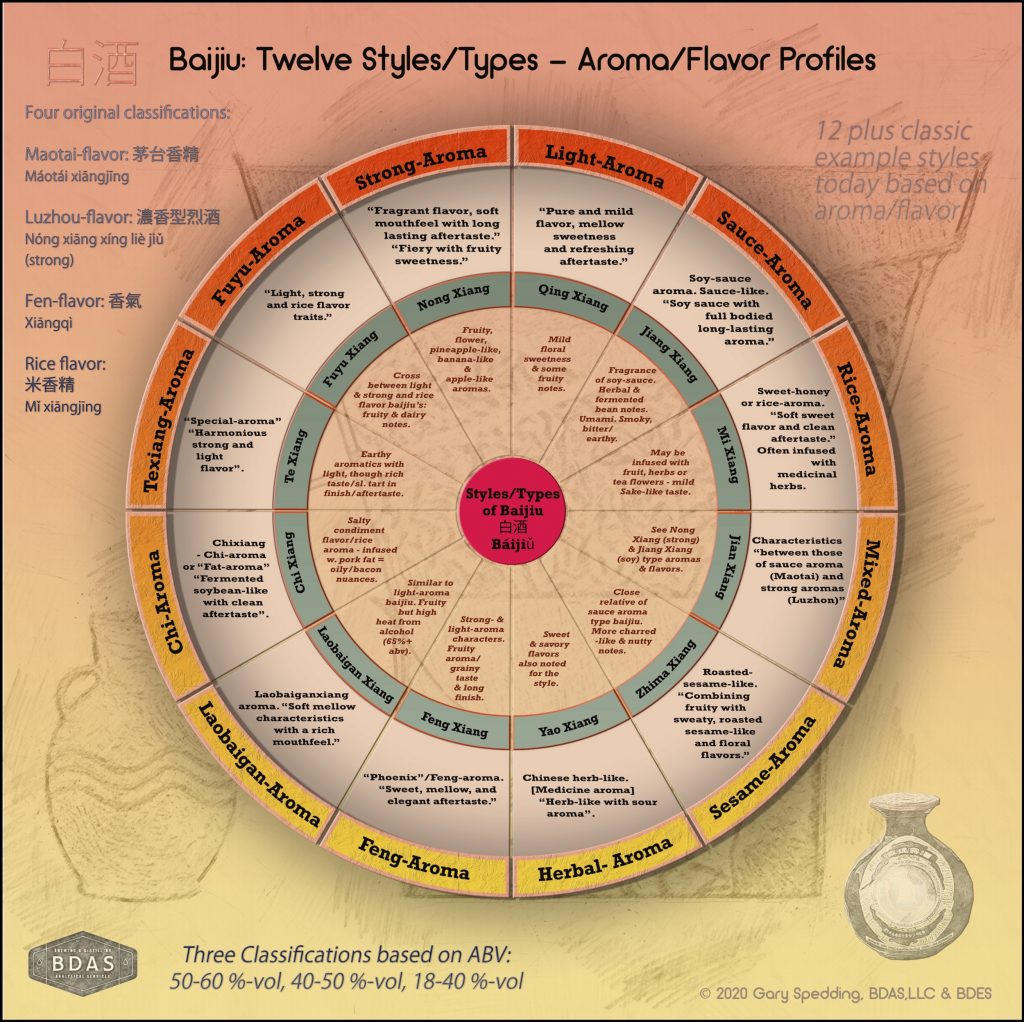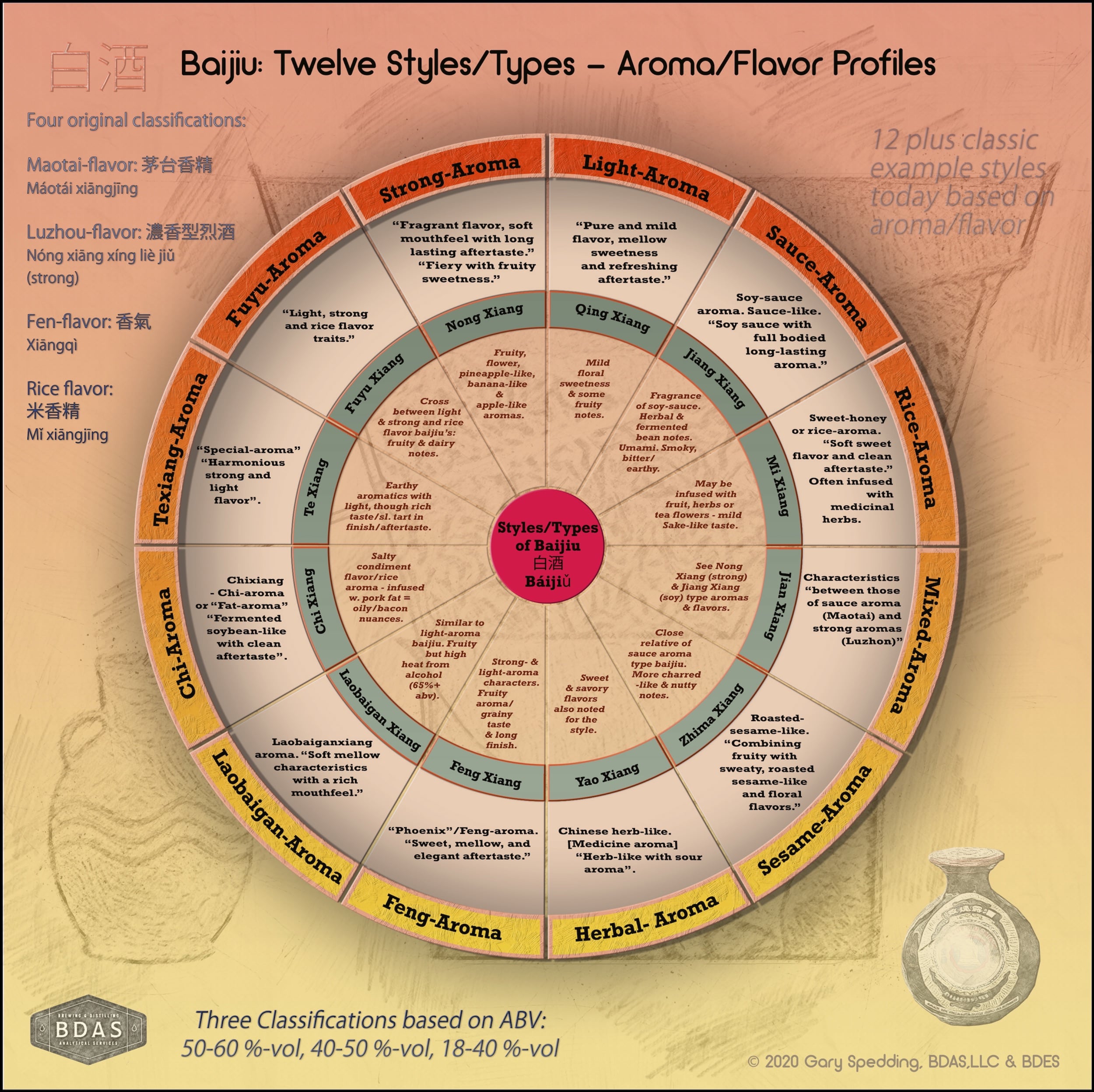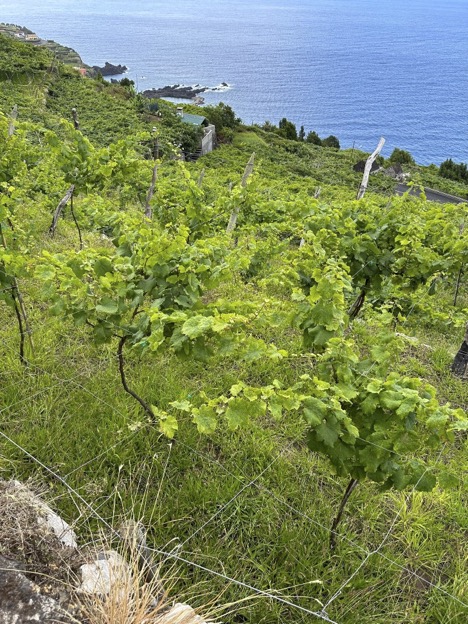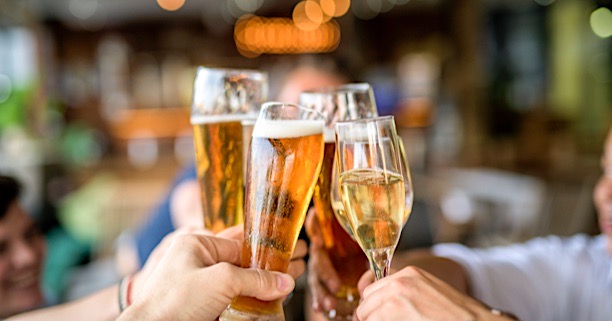Chinese baijiu is one of the oldest distillates in the world, and has been defined into 12 plus categories or “styles/substyles” based on aroma/flavor characteristics.
Several hundred chemical compounds have been defined as contributing to the composition and flavor profiles of the different styles or type of this Chinese Liquor. These include flavorful esters (often fruity in nature), fatty acids (often rancid, cheesy, goaty and dairy-like notes) and sulfur compounds – among a plethora of other flavorful molecules. These notes also include earthy/muddy and farmyard characteristics and savory, complex sweet notes, and roasted, nutty flavors. Baijiu is the most widely consumed beverage in the world. Some estimates cite an annual production of 13 million kL in 2017 (1 kiloLiter = 1000L or 264.2 US gallons) or approximately 3,434 million gallons. 9.43L annually per Chinese citizen!
Two works discussing Baijiu in some detail are those of Sandhaus (see references). Sandhaus notes that around 10000 distilleries of varying sizes and capacities exist in mainland China today after peaking at between 18-36000 by the early 1990’s. Between them it is also estimated that there are tens of thousands of baijiu products available. Generally categorized as light-aroma type, strong-aroma-type, soy sauce-aroma type, sweet- and honey-aroma type and miscellaneous-aroma-type liquors. A more expanded nomenclature appears for the different styles or types as shown in Figure 1.

Figure 1. The first known flavor wheel covering the general flavor impressions or expectations from the 12 main types or styles of Baijiu.
This flavor wheel, presented here for the first time – being a work in progress – covers the general classifications – based on flavor profiles (aroma and taste = flavor) for a dozen generally recognized styles or types of the Chinese liquor known as Baijiu. English and Chinese names for each class are presented along with general impressions and a little more flavor detail. It should hopefully be a useful tool for sensory panels and in spirits judging competitions.
Unlike most alcoholic beverages known in the Western World, the raw materials, and manufacturing processes, including fermentation, distillation and aging, plus the flavor characteristics of baijiu and other Chinese liquors are all quite different from our general understanding of wine, whiskey and brandy production. This is mainly because baijiu is a product of solid-state fermentation and distillation. In a nutshell, grains and a complex starter culture of microorganisms (see Figure 2 – Baijiu Production) are mixed together and simultaneous saccharification and fermentation in a solid (rather than submerged) state takes place. The mixed-culture of organisms (yeasts, bacteria and molds) – embedded in a fermentation starter known as Daqu or Qu are actively involved and solid-state steam distillation processes are employed – sometimes with the implementation of multiple reiterations of fermentation and distillation. Aging of base liquor is then allowed to occur in sealed jars, followed by blending and bottling. Figure 2 shows the general outline of baijiu production.

Figure 2 – Baijiu Production
As noted from above in Figure 2, a very complex and time-consuming process is involved in the production of the various styles of baijiu. With all the raw materials used, the special microbiological and enzymatic properties of the varied types of Qu or daqu, the spontaneous inoculation of additional yeasts, bacteria and molds from mud pits and the surroundings where baijiu is produced, and the reactions occurring during the fermentations, distillations and aging it can be seen how the complex flavor profiles associated with baijiu are developed.
Baijiu is thus clearly differentiated from other liquors based on its distinctive flavor, taste, and production process. Each style has been the subject of extensive research and the focus of dozens of papers. While detail could not be provided here, one key fruity flavor of note in baijiu is the compound ethyl hexanoate. This ester exhibits a fruity, floral and sweet aroma and has apple-aniseed-like qualities. Its flavor/aroma potency comes through well in Chinese liquors, especially in strong-aroma type baijiu. Other esters convey tropical and other fruit notes. A potent odorant in Chinese sesame-flavor baijiu is known as furfurylthiol (a sulfur compound). This compound along with other related aromatic thiols contribute roasted sesame, grapefruit, passion fruit and boxwood characters with thresholds for detection in the parts per trillion range. Soy sauce-aroma type baijiu is also associated with some components conveying a key retronasal burnt flavor. While much more could be said about the multiple flavor components, this short review covers only an outline with the general flavor impressions or expectations from the 12 main types or styles of Baijiu being presented in Figure 1. A paper by the present author and Jamie Baxter is currently in press with much more coverage of Baijiu.
References:
Sandhaus, D. BAIJIU: The Essential Guide to Chinese Spirits. Penguin Books. (2014).
Sandhaus, D. Drunk in China: Baijiu and the World’s Oldest Drinking Culture. Potomac Books. (2019)
Jin. G., Zhu, Y. and Xu, Y. Mystery behind Chinese liquor fermentation. Trends in Food Science & Technology. 63; 18-28. (2017).
Liu, H. and Sun, B. Effect of Fermentation Processing on the Flavor of Baijiu. J. Agric. Food Chem. 66; 5425-5432. (2018).
Spedding, G. and Baxter, J. Baijiu – An Acquired Taste? Chinese Liquor with a Range of Wild Flavor Characteristics. Artisan Spirit. (2020). In press.





